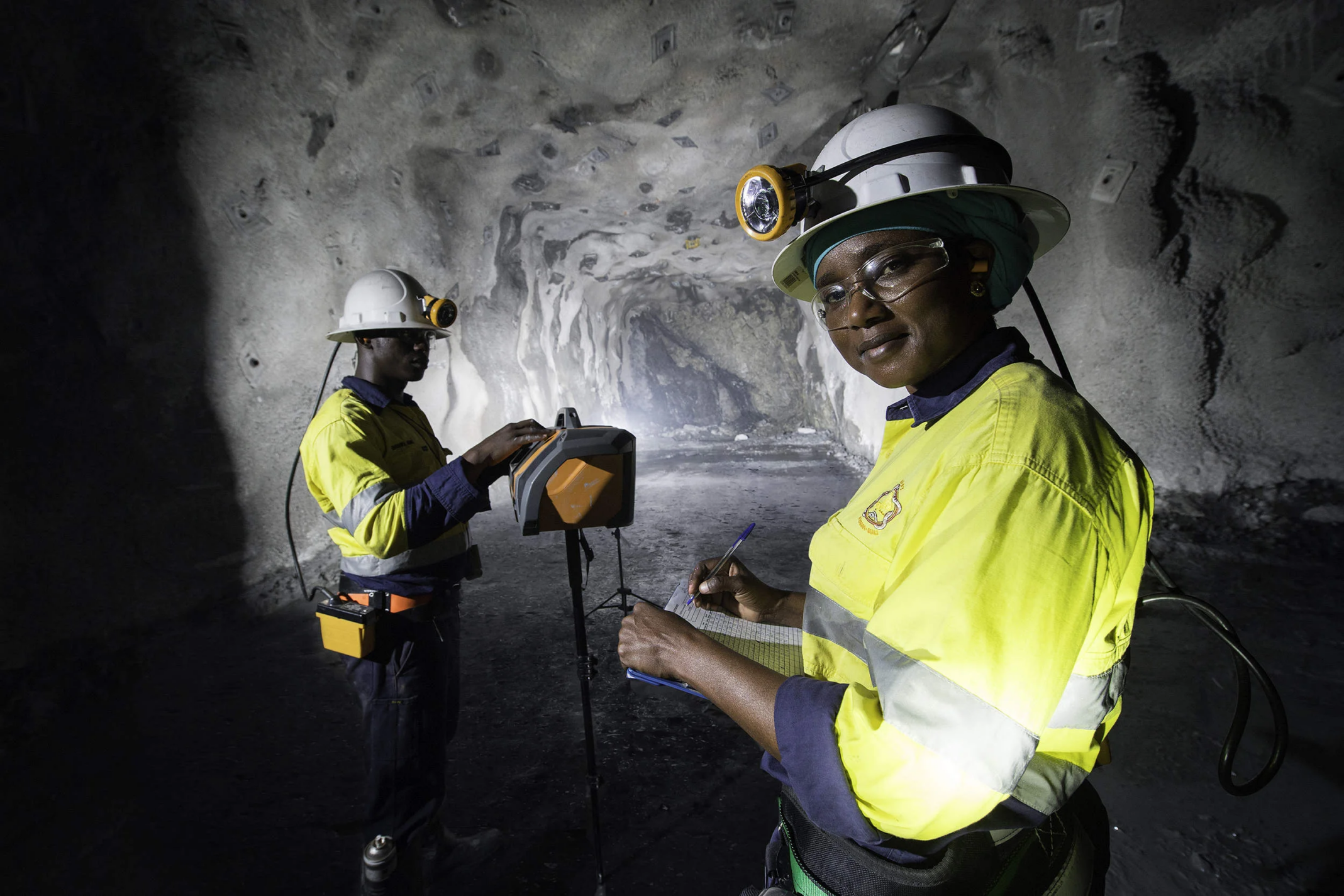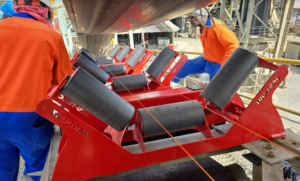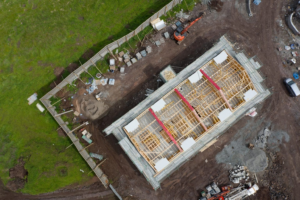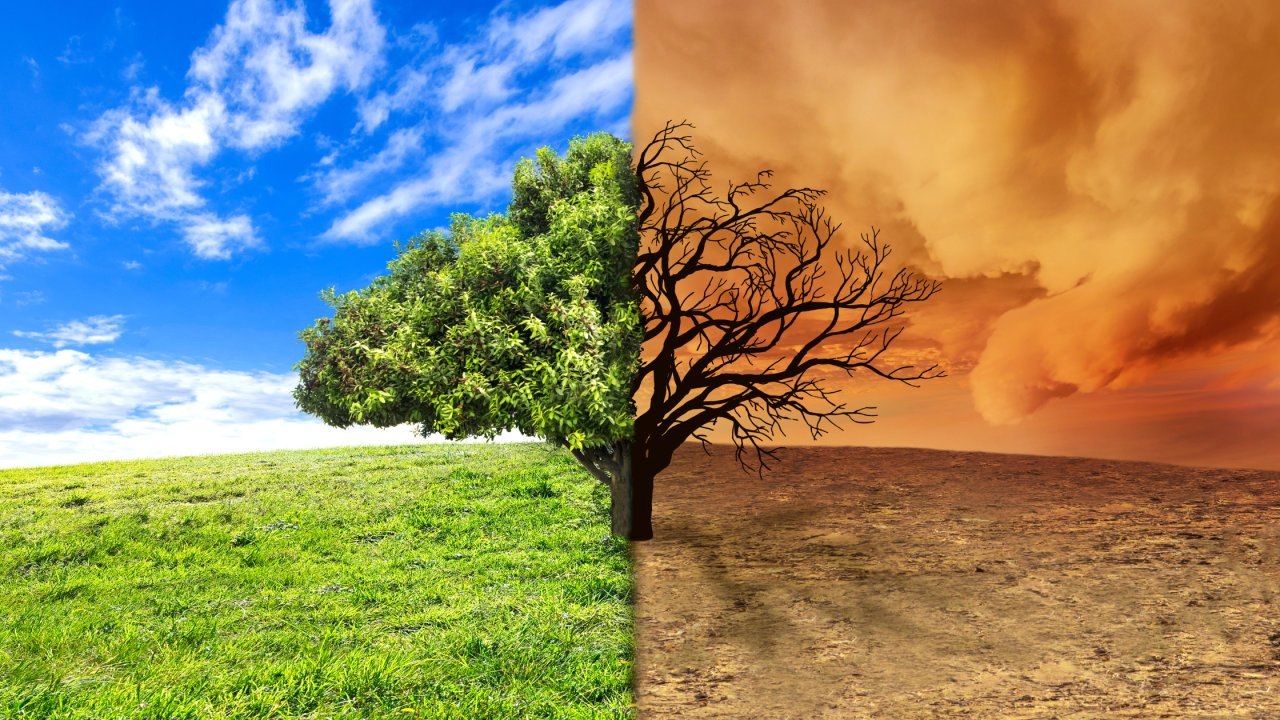THE IMPACT OF TECHNOLOGICAL ADVANCEMENT ON NATURAL RESOURCES: How will Mother Nature react to the rapid evolution of technology? INTRODUCTION

The modern world is in between the two big poles – progress is being accelerated through advanced technologies, and, at the same time, humanity is on the verge of a planetary disaster.
Over the years, there has been rapid advancement in the use of technology in the various aspects of life and this has had a positive impact such as in the delivery of healthcare, communication, efficiency, and innovation.
Nevertheless, this advancement comes with a lot of risks as the environment deteriorates with the ever-growing technologies that humans explore.
With a focus on constant developments in technology and progress, we also have to pay attention to the impact it has on the world. This is a rather tight line that separates mankind’s development and harms our environment because we still have to remember that most of the effects of the decisions we make today will affect the lives of our descendants in the future. TECHNOLOGICAL ADVANCEMENT ON NATURAL RESOURCES
In this article, specific attention will be given to the way that technology continues to develop and the consequent changes to nature that are often observable; both the advantages and disadvantages will be analyzed and the imperative goal of trying to attain progress and take care of the environment simultaneously will be explained.
TECHNOLOGY AS A BLESSING AND CURSE.

Positive Impacts of Technology Advancement on Nature:
1. Optimization of Resources Utilization and Minimization of Waste.
People currently value the efficient use of resources and technology, one way through which human beings have made extensive use of resources in a very efficient way to encourage minimal wastage.
New knowledge in such areas as materials science and industrial design is used to create new eco-friendly materials and processes. For instance:
I. Recyclable materials: Advanced technology has enhanced the use of materials that can be recycled over and over again, hence cutting on the use of raw materials and the amount of waste produced. TECHNOLOGICAL ADVANCEMENT ON NATURAL RESOURCES
II. Optimized supply chains: The business has also benefited from advances in technology by way of supply chain management, which can now be done efficiently to minimize wastage as well as the utilization of resources.
III. Efficient manufacturing processes: The remaining one has seen an improvement in manufacturing technologies, global resource use, waste, and energy consumption. TECHNOLOGICAL ADVANCEMENT ON NATURAL RESOURCES
2. Renewable Energy Sources
One of the critical changes that have occurred in the fight against climate change is the conversion to green energy.
Modern innovations have come up with newer ways that tap cheaper sources of renewable energy sufficient to help us cut down on the use of fossil energy sources. Some notable developments include:

I. Solar energy: Today a large number of studies have shown that efficiency in converting solar power has improved substantially and thus has become a strong contender for mainstream energy.
II. Wind energy: Interfacing has enhanced the generation of energy by wind turbines and has become one of the prominent sources of energy in the world today.
III. Geothermal energy: Technological advancements have seen the exploitation of geothermal energy which is a socially beneficial way of producing electricity.
3. Activities about monitoring the environment and conservation.
Modern Information Technologies is widely used in monitoring the changes in the environment, and in supporting these changes throughout the conservation of species and ecosystems. Some notable examples include:
I. Remote sensing and satellite imaging: We have moved to a position of noticing these changes in the environment, measuring the progress of deforestation, and even detecting areas of interest in conservation.
II. IoT sensors: IoT sensors for environmental monitoring in the present structures have also facilitated continuous monitoring of environmental parameters altering with time and thus the ability to act on the changes as soon as they occur.
III. Conservation drones: Nowadays, UAVs with cameras and sensors have become instruments to census animals, report on poaching, and press interventions for wildlife regions.
Thanks to these technologies we can learn more about the nature we need to protect and assume a responsible path from now on. If our natural capital’s protective capabilities are kept alive by our utilization of technology as humanity’s multiplier for good, the adverse impacts of human activity can be effectively minimized.
NEGATIVE IMPACTS OF TECHNOLOGY ON NATURE:

1. POLLUTION AND E-WASTE
Due to high levels of innovation especially in the manufacturing of technological products, pollution and especially ‘e-waste’ has tremendously improved. The production and disposal of electronic devices have devastating environmental consequences, including:
I. Toxic chemicals: Some of the substances for instance lead, mercury, and cadmium, which the electronic devices consist of, pollute the soil and water when put in the wrong place.
II. E-waste dumping: E-waste has been disposed of in third world countries encouraging the pollution of the environment and posing health risks to people.
III. Resource depletion: It becomes important to note the necessary minerals for technology production, mining of which yields terrible impacts on the environment and mankind such as deforestation, pollution, and social barbarity.
2. CLIMATE CHANGE AND CARBON FOOTPRINT
Technological development has also compounded the carbon footprint of all the activities being undertaken since the energy required to support the technological enhancement is obtained from carbon-emitting sources. The consequences include:
I. Greenhouse gas emissions: Technological devices in production and their usage depend on fossil fuel which in turn leads to the emission of greenhouse gasses and thus leads to climate change. TECHNOLOGICAL ADVANCEMENT ON NATURAL RESOURCES
II. Energy consumption: Data centers, servers, and the existing diverse networks all consume energy rapidly and contribute to climate change’s expansion as a result of their recent expansion.
III. Resource extraction: Technological production requires a resource that can only be extracted from the earth, and this is where the problem lies many resources required for the production of technology have negative impacts on the environment and people by causing deforestation, polluting the environment and violating human rights concerned in the digging of the resources like coal and oil.
3. In this case, the resources are the natural habitats and ecosystems that are disrupted by human beings in this context.
Technological development has also resulted in penetration into the natural habitats and ecosystems with negative impacts on the needs of the environment. Some notable examples include:

I. Deforestation: The natural materials required for the manufacturing of technologies and other gadgets are extracted hence destroying the natural environment such as forests, which are the natural homes of various species of animals and plants. TECHNOLOGICAL ADVANCEMENT ON NATURAL RESOURCES
DON’T MISS THESE INDUSTRY-LEADING EVENTS!

October 8-10, 2024
Memphis, TN
II. Habitat destruction: The construction of such required structures as data centers and server farms for technological necessities has led to habitat destruction and invasions.
III. Wildlife displacement: Some of the changes include; The noise of the gadgets has shifted the noise quotas of the animals hence corning other species, and the light which is associated with the devices has intervened on the natural behavior of other species of animals.
Technological advancement is devastating to nature in large and dreadful ways, despite the numerous benefits it brings. This article urged society to start taking corrective measures if ever it aspires to counter some of these consequences and innovate green technology that would allow the world to become habitable again for the succeeding generations.
The Potential Consequences of Unchecked Technological Advancement: The Possible Impacts of Emergence of Technology:
Given the fact that the advancement of technology is gradually moving forward not only in terms of speed but also in terms of the degree of audacity, new destructive effects on the environment can be only added with the help of an uncontrolled level of technological advancement. If left unmitigated, the impact of technological advancement on nature could lead to When ignored, phenomenal development in the area of technology threatens nature in the following ways:

Loss of Biodiversity
I. Extinction of species: Civilization annihilation of the natural biomes and other systems leads to the wiping out of many species; hence unbalancing the earth’s balance.
II. Disruption of food chains: The extinction could in turn the other forms of life to be destroyed hence the breaking of food pyramids.
Climate Chaos
I. Accelerated climate change: The indicated further usage of technologies by people would increase the energy consumption rates aggravating climate change, thunderstorms, hurricanes, and adverse effects on human life.
II. Destruction of natural habitats: Holding the infrastructure development that is necessary for the technology development could lead to loss of habitat destruction which leads to the destruction of the ecosystem.
III. Disruption of natural processes: Intrusion into cycles for instance water and nutrient cycles may be catastrophic to ecosystems.
Iv. Increased pollution: Whereas generation and neutralization of technological devices might lead to pollution thus leading to negative impacts on the health of people.
Social Impacts
I. Displacement of communities: The creation of infrastructure needed for technology development may lead to people’s relocation, hence resulting in sociocultural consequences.
II. Increased inequality: But a problem here is that the differential distribution of technological resources may widen the gap between the social and economic members.
As earlier hinted, the likely impacts of uncontrolled technology increase represent a major threat to the physical environment. These shocks require that we cultivate green technological advancement to minimize the resultant consequences and provide for the suitability of the planet for inhabitation in the future.
The Need for Sustainable and Eco-Friendly Technologies:
This becomes a call to action to find solutions to the environmental problems that threaten the future of the planet.
In the present epoch when the whole world struggles with climate change issues, environmental pollution, and social injustice, sustainable, and green technologies become a critical imperative. Despite the advantages that are associated with the growth of technology, it has proved to be a threat to environmental conservation and the general well-being of man.
These issues make it possible to overemphasize the importance of adopting green and sustainable technologies that will contribute to the events of the society’s available resources vestment in Green Technologies

Innovative Green technologies have to be encouraged and implemented to effectively cut down on our emission of carbon and set the tone for the sustainable use of carbon in the environment. Persons, organizations, and states must put their money, time, and efforts into the development of renewable energy, environment-friendly structures, and technologies. Some areas requiring investment include:
- Production & usage of renewable energy including solar power, wind power, and hydropower.
- Storing & Managing energy and upgrading the grid.
- The techniques relative to agriculture and forestry practices that will support the environment.
Responsible Innovation and Design

It comes in handy for the authorities and the designing sectors to embrace the responsibilities of innovation to reduce environmental impacts. This includes:
- Design of products and systems to make them easily recyclable and reusable.
- Minimizing waste and pollution.
- Bearing in mind the consequences of Implanting modern technologies.
- Creation of sustainable supply chain management and sourcing.
The social issue that came up in the interaction involved a synergistic relationship between the Tech industry and the Environmental industry.
Such interaction is important, as only the union of the technical and environmental spheres can create worthwhile solutions to environmental problems. This includes:
- Technology Companies and Environmental Non-Governmental Organizations.
- Dissemination of knowledge and experience and information transfer.
- In this context, one may properly speak about the co-development of technologies and practices, sustainable for the environment.
- Main topic: Incorporation of the environmental aspect into the creation of IT goods.
Therefore when we incorporate sustainable and environmentally friendly technologies individuals and the society at large will respect the environment and thus provide future generations with a befitting environment to live in.
CONCLUSION
On this note, as we advance in our pursuit and development of technologies that will propel us to greater heights, it is good to take a pause and recall that we live on planet Earth and we all must protect it. The prospects for the further development of technology and the state of nature are closely connected, and the decisions made nowadays will affect future generations.
Innovations are good and should be sought after but should not be sought at the detriment of the nature of this world. The path to the future in which technology and nature are closely intertwined consists of giving preference to sustainable and environmentally friendly technologies, investing in green technologies, and promoting cooperation between the IT industry and the branch of environmental protection.
Technology is the future area of investment; it remains our responsibility to keep it green. The best thing is to continue supporting development but at the same time ensure that the environment and the beauty of the created systems do not deteriorate in any given way, which has turned technology into a natural human resource.
In conclusion, the impact of technological advancement on nature is a complex and multifaceted issue, but one thing is clear: This led me to argue another tenet that we should hold: our choices exist. It is high time we select a course that will not only guarantee the advancement of society but also sustain the environment in the future when there will be a kind of integrated society of technologies and nature.



















